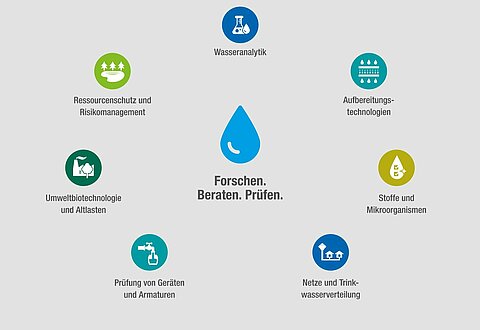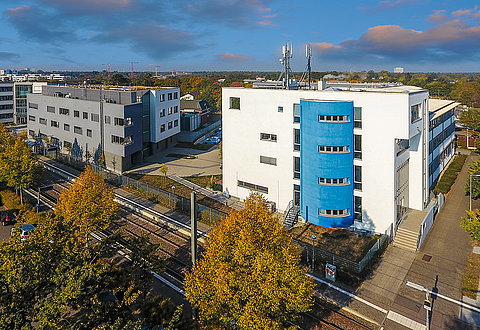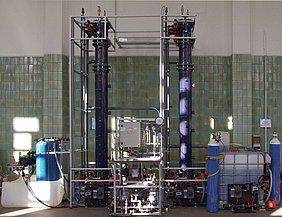The rise in DOC concentration in drinking water reservoirs greatly impacts drinking water treatment. The objective was to develop methodical foundations to determine capacity limits of the methods used to eliminate particles and DOC in waterworks in the face of increasing DOC concentrations.
Based on results from laboratory and small-scale trials, a methodology was created to determine the effort and expense of drinking water treatment depending on the raw water DOC. This includes establishing the flocculant requirement and reviewing the capacity of the existing flocculation or flocculation filtration step depending on the DOC. The basis for determining the treatment capacity is the evaluation of the operating data to consider fluctuations in the flocculation behaviour related to the raw water. For the established specific area loads, the model approaches developed in the project can be used to calculate the influence of the flocculant dose on the filtering time.
If it appears that the required treatment capacity in the plant can no longer be ensured in the event of an expected DOC increase, it should be investigated whether the performance of the existing plant can be increased. Possibilities to increase performance besides dosing with flocculant are switching to acidic flocculation or converting flocculation basins to sedimentation basins. If it is not possible to increase performance or inadequate, treatment needs to be expanded. +
Publications:
Wricke, B.; Bornmann, K.; Plume, S.: Einfluss von gelöstem organischem Kohlenstoff (DOC) auf die Aufbereitung von Talsperrenwässern [Influence of dissolved organic carbon on the treatment of reservoir water]. DVGW energie|wasser praxis 06/2016, 68-78 (2016)


![[Translate to English:] Prüfstelle-Produktprüfung_Teststand Test centre and product testing](/fileadmin/_processed_/0/9/csm_TZW-Karlsruhe_Pruefung_Geraete-Teststand_444204ae51.jpg)

























